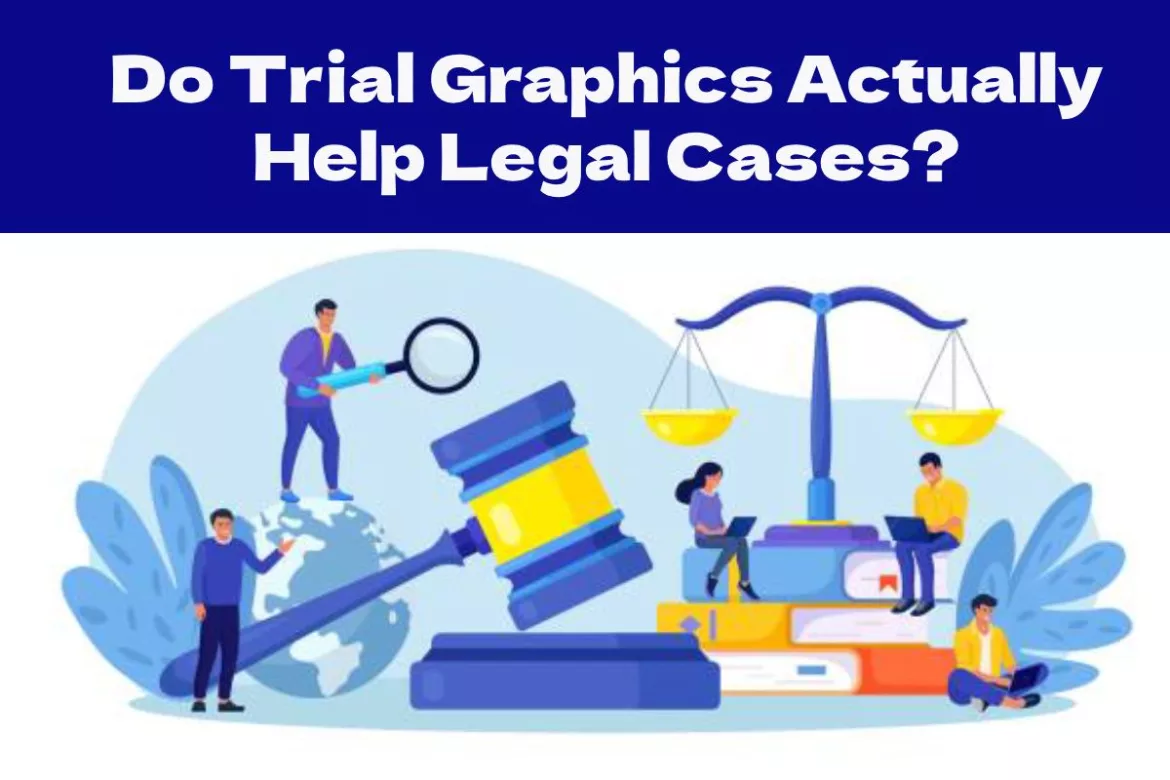Within the dynamic field of legal battles, a trial graphics is a powerful tool that translates complex legal stories into visually accessible stories. This innovative approach will not just help in the avoidance of jurors’ losing themselves in hard details but substantially increases their activity and interest in your case.
A trial graphic often includes diagrams, calendars, and animations. Anything that helps with a visual reconstruction of events. They make the abstract concrete and the complicated plain and thus bridge the disparities between complexity and simplicity.
As we delve into the efficacy of trial graphics in legal cases, it becomes apparent that their strategic use can be a game-changer in the courtroom.
Table of Contents
The Impact of These Visual Aids on Legal Outcomes
A substantial amount of research has indicated that trial graphics can help with both subject comprehension and retention rates among viewers. Additionally, trial graphics can evoke increased emotional responses – marginally shifting juror views – and, consequently, decision-makings in the favor of a particular theme.
In this regard, the strategic uses of such graphics in an actual courtroom setting may be said to attract the attention of the jurors to the noteworthy attributes in a case, differentiate between the testimonies which don’t add up, and identify the key evidence by attracting the attention of the jury to such points which are supportive of the position one is trying to argue.
Navigating the Challenges
As with all things positive, the use of the trial graphics in legal strategies is also not without a number of challenges. The creation of meaningful visual aids demands three things. First is the knowledge and understanding of the legal concepts being explained. Second is the ability to create skillful designs and third is the culture of so-called storytelling. There is also an extremely thin line between making the information simpler and oversimplifying it or even giving wrong impressions to the jury, a line the legal teams have to tread very carefully.
In addition, high overhead costs associated with things like expensive software and hardware must also be factored in when you want to produce top-of-the-line trial graphics, particularly for small legal practices or low budget cases.
FAQ: Can Live Photos and Videos Be Used in Trial Graphics?
The question of whether live photos and videos can be incorporated into trial graphics touches upon an evolving aspect of legal practice. The short answer is yes, these dynamic elements can be used within trial graphics. However, the legal team must navigate the strict procedural rules governing the admission of evidence in such a way that the live photograph or video that is presented in court passes relevance, authenticity, and fairness thresholds.
Conclusion
While it is not without its own sets of drawbacks, the power of trial graphics is great; they influence legal cases by enabling the enhancement of comprehension, engagement, and persuasion. The pluses of trial graphics also include making tough information very “palatable,” even entertaining. These definitely come in handy, as they help with highlighting the core issues at stake and, in fact, offer jurors the much-needed clarity in clearly making informed decisions.


